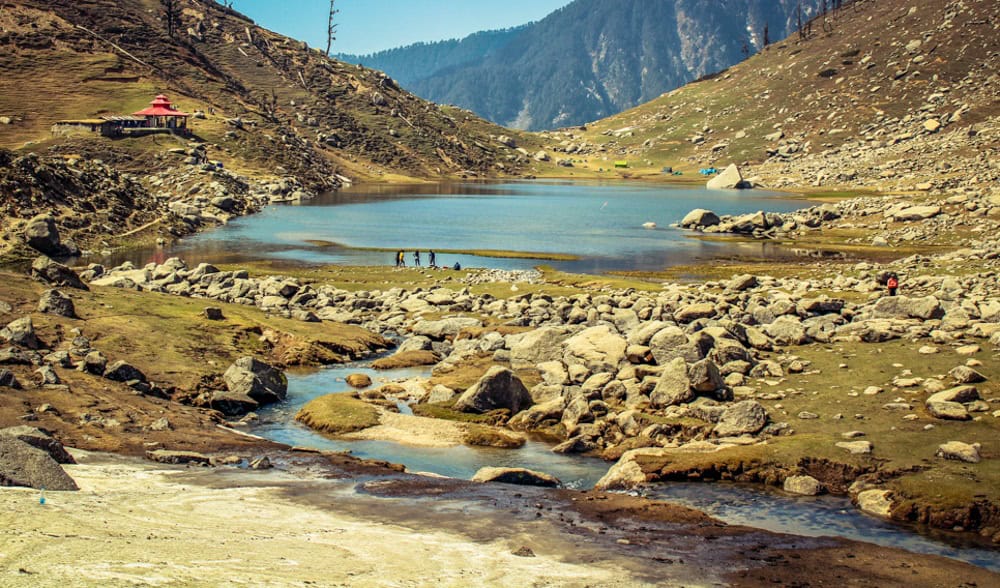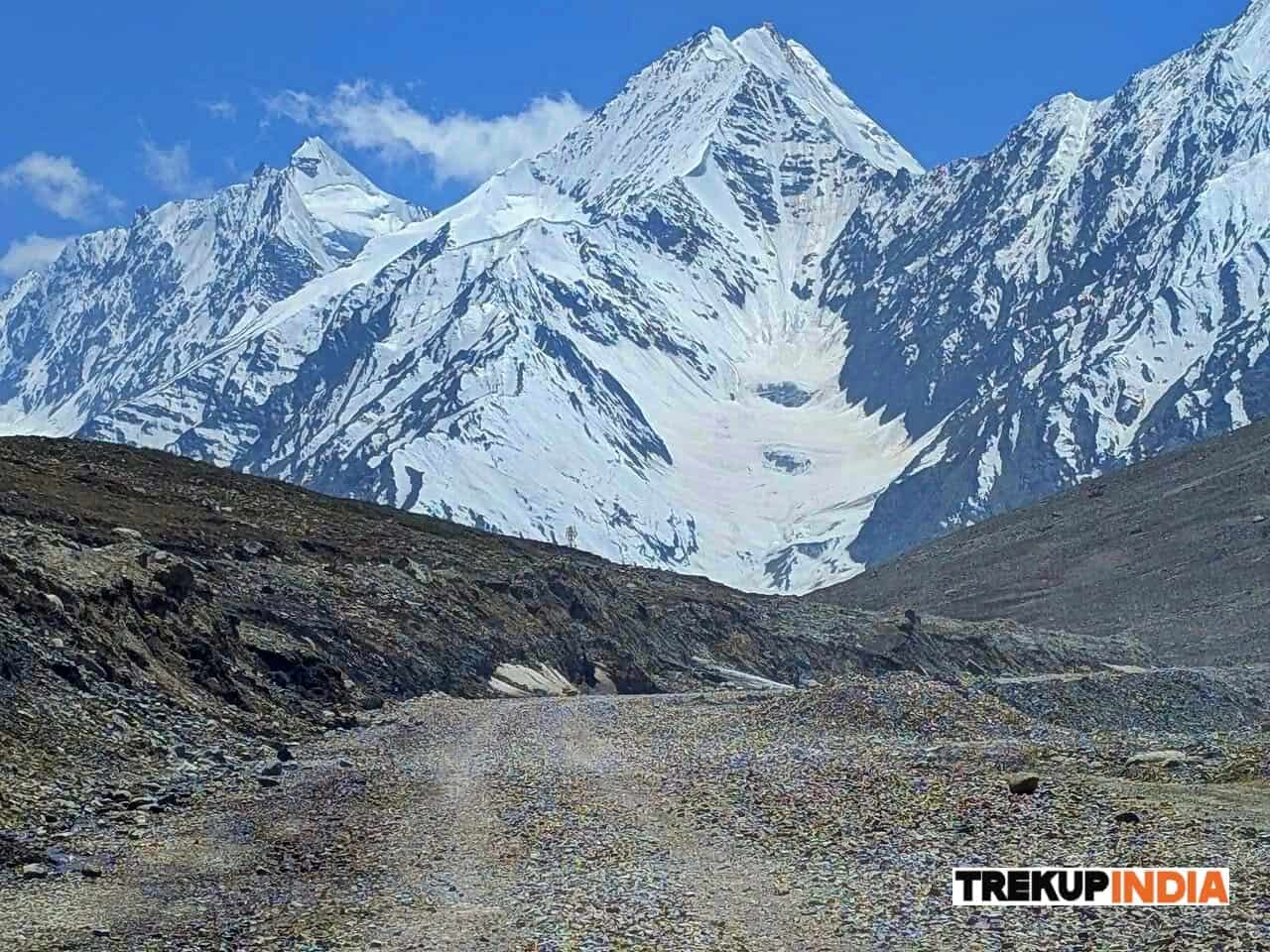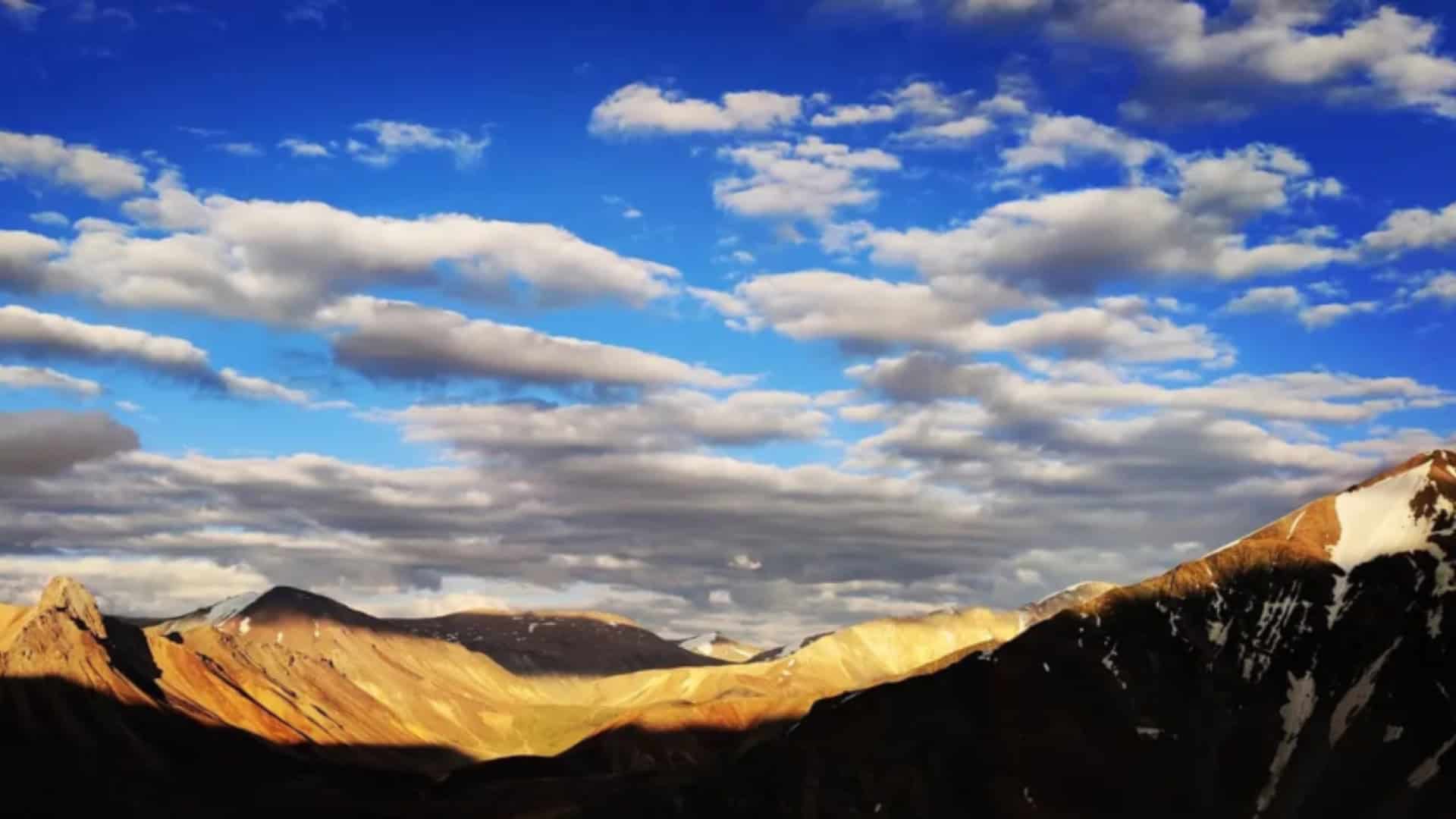Trek Grade
Challenging
Highest Altitude
19553 Ft
Base Camp
Kibber
Best Time
July, August - Mid Sept
Trek Distance
22 Km
Not sure which trek is right for you? Trekup India’s Mountain Experts have you covered.
Not sure which trek is right for you? Trekup India’s Mountain Experts have you covered. From figuring out if a trek matches your fitness level to knowing who you’ll be trekking with, we’re here to answer all your questions. Reach out to our Mountain Experts and plan your trek with confidence.
Kanamo Peak Trek
The Kanamo Peak Trek is located in the Spiti Valley of Himachal Pradesh at 19,553 ft. The total distance of the trek from Kibber is 22 kilometres. This trek is considered strenuous as the trail ascends rapidly. Prior experience is required to do this trek, as it will help you deal with acute mountain sickness. The area around Kanamo Peak is deserted, and there is little vegetation, with snow on the mountain’s peak. In August, you might see Spiti in its harvest season; in winter, it becomes difficult to walk on a trail through boulders during snow. Being well-prepared and physically fit is crucial to thoroughly enjoying and conquering this challenging trek.
A challenging trek awaits those who seek the thrill of reaching high altitudes in the heart of Spiti. Unlike the popular Stok Kangri, the lesser known Kanamo Peak offers a quieter and more pristine trekking experience, away from the commercialization of modernity. However, tackling Kanamo Peak is challenging and requires a high level of physical fitness, as the trek involves a demanding climb over scree and boulders from the base camp to the summit.
The ascent to the peak and the subsequent descent back to base camp on the same day cover approximately 10 km of challenging terrain, making it a test of endurance for even the most experienced trekkers. Despite the difficulty, the reward of reaching the summit is breathtaking, offering panoramic views of over 35 other peaks from Ladakh, Spiti, Kullu, and Kinnaur. Standing atop Kanamo Peak feels like being on top of the world, surrounded by towering mountains and in proximity to Shilla Peak, creating a truly unforgettable experience.
Trek Cost
- Stay will be on a twin-sharing basis in tents
- ₹ 4,000 extra for Transport
- + 280 Trek Insurance (Mandatory)
Fix Departure Dates
Kanamo Peak Trek Videos
Videos by experts watch these videos to prepare well for a Successful Trek

Want To Trek Like Pro?
Basically, watch these videos if you want to trek the same way professional trekkers do and make your skills better. These videos contain useful tips and techniques to further improve your trekking skills itself. These videos actually help both new and experienced trekkers improve their trekking skills. These videos definitely provide useful tips that make your trek better. We are seeing that these videos by Trekup India experts will only help you make your trekking skills better.
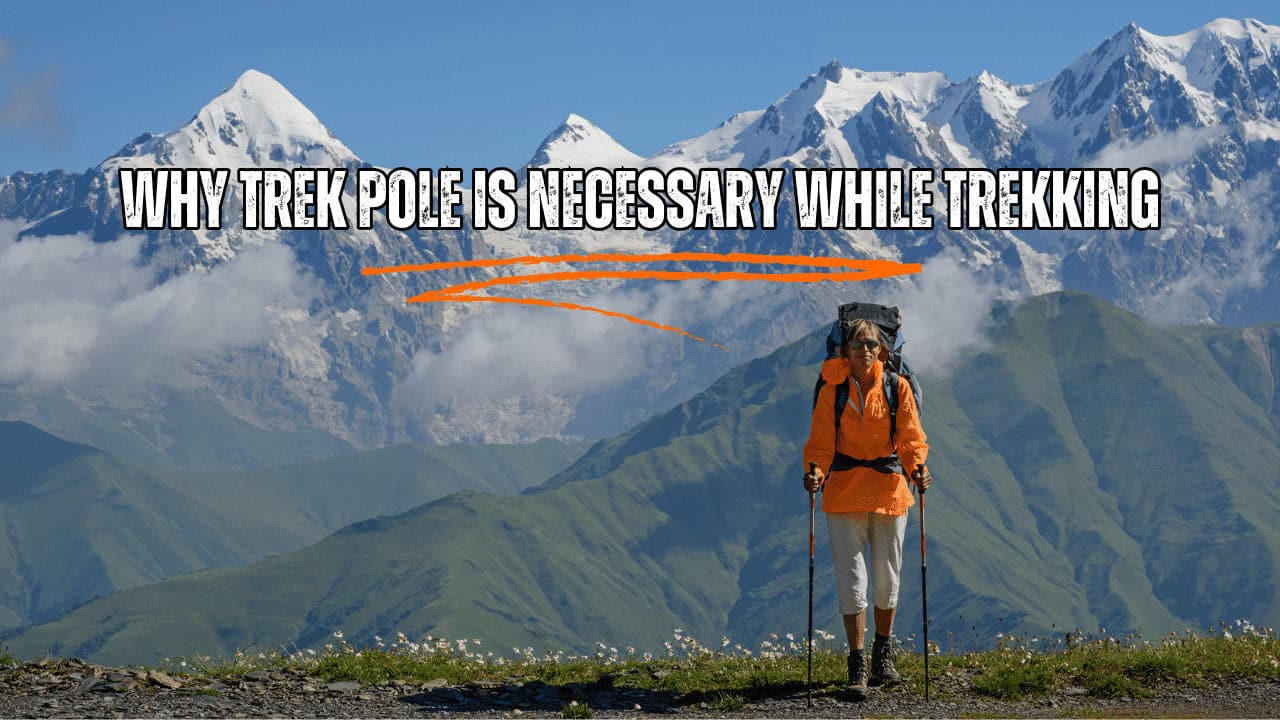
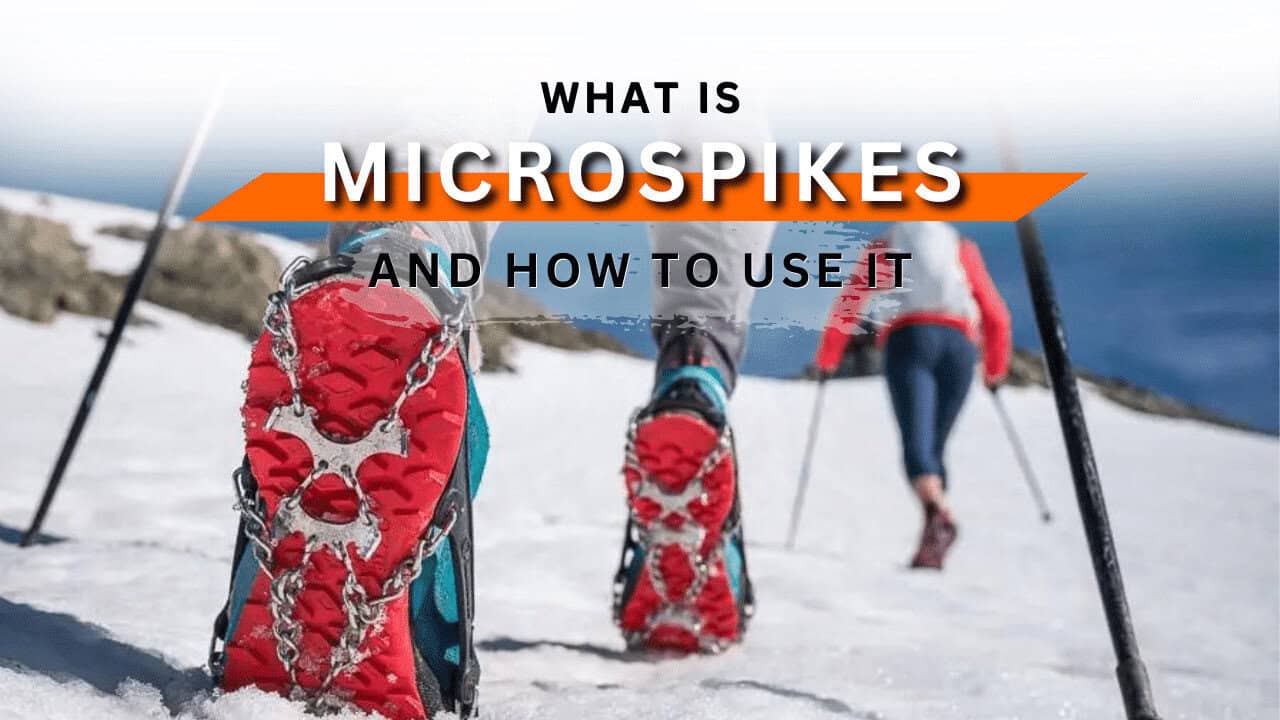
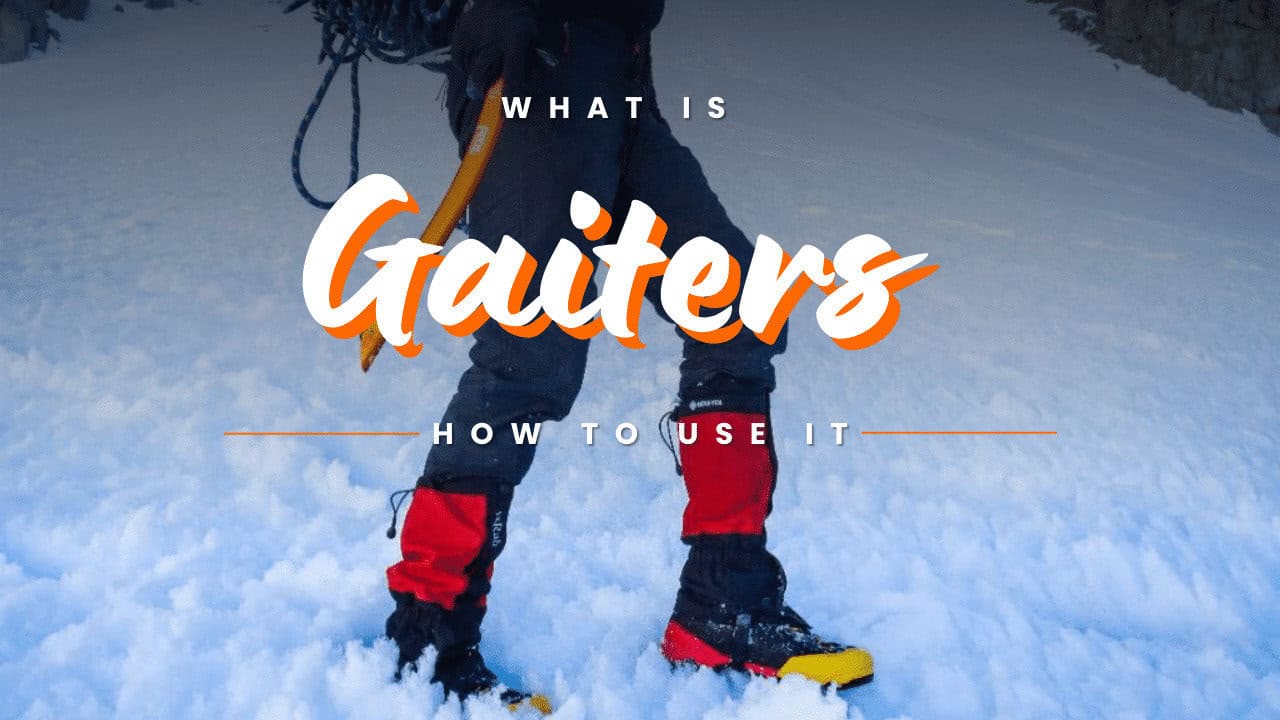
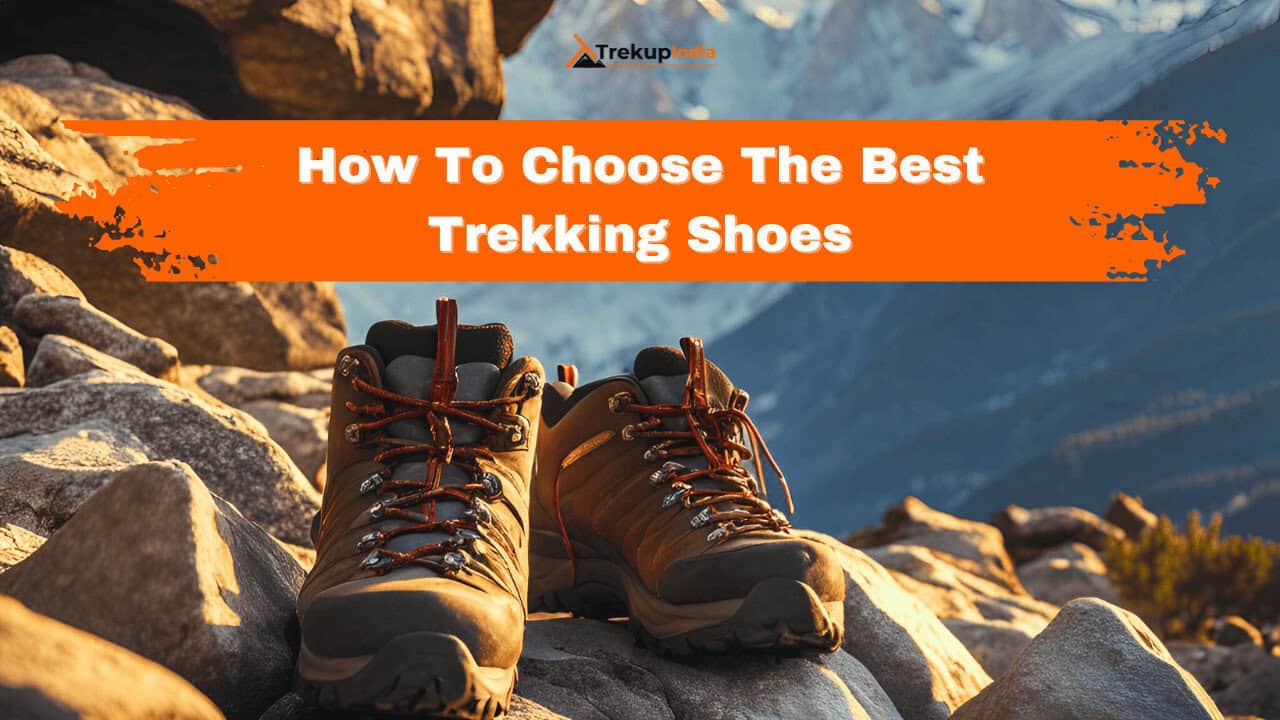
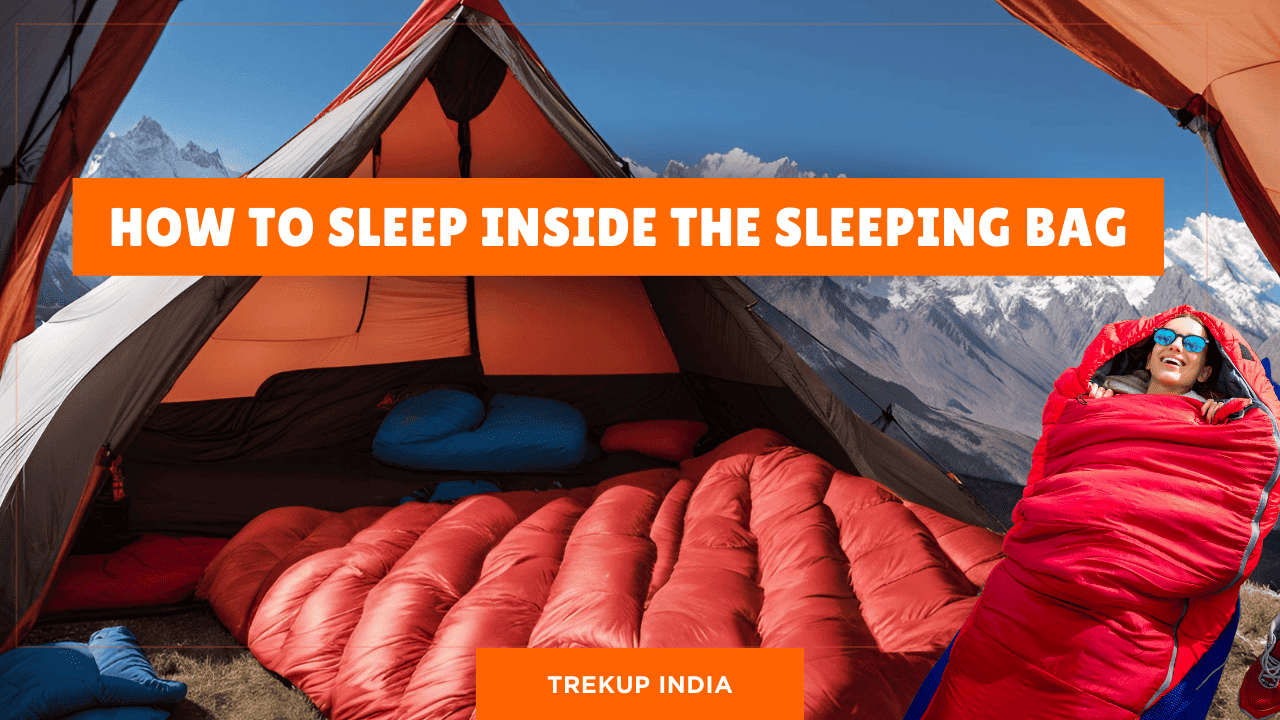
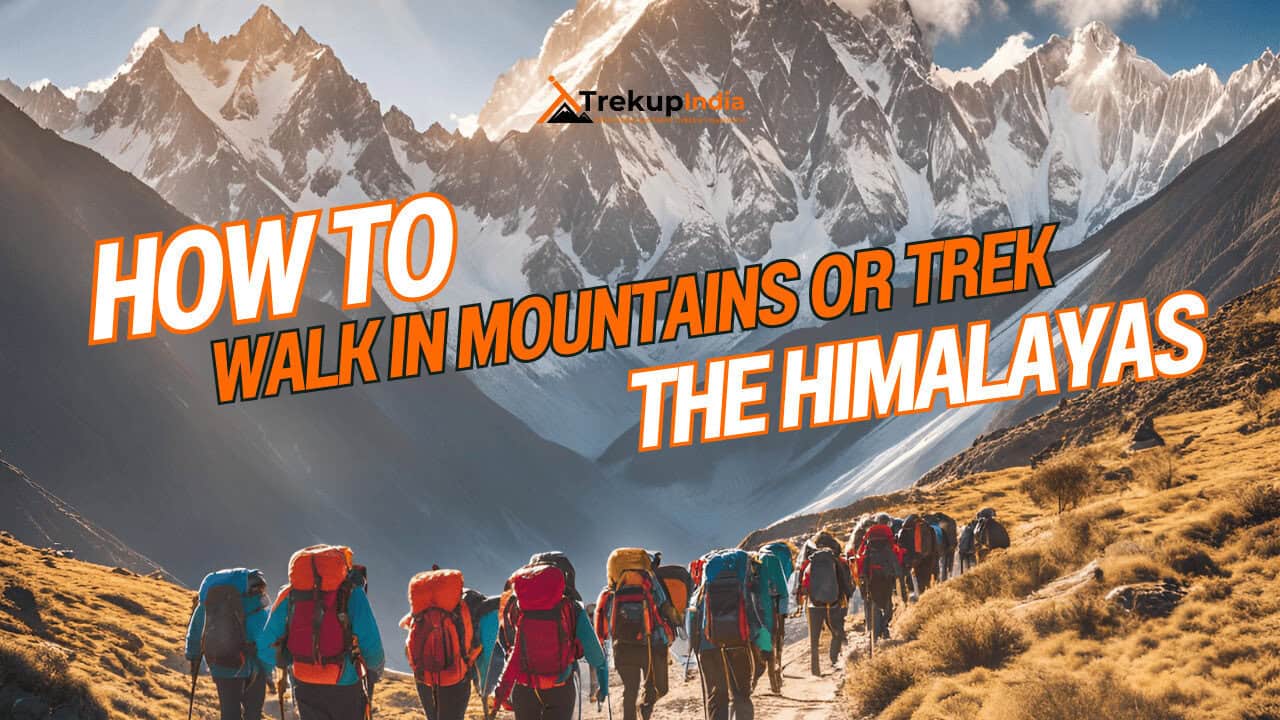
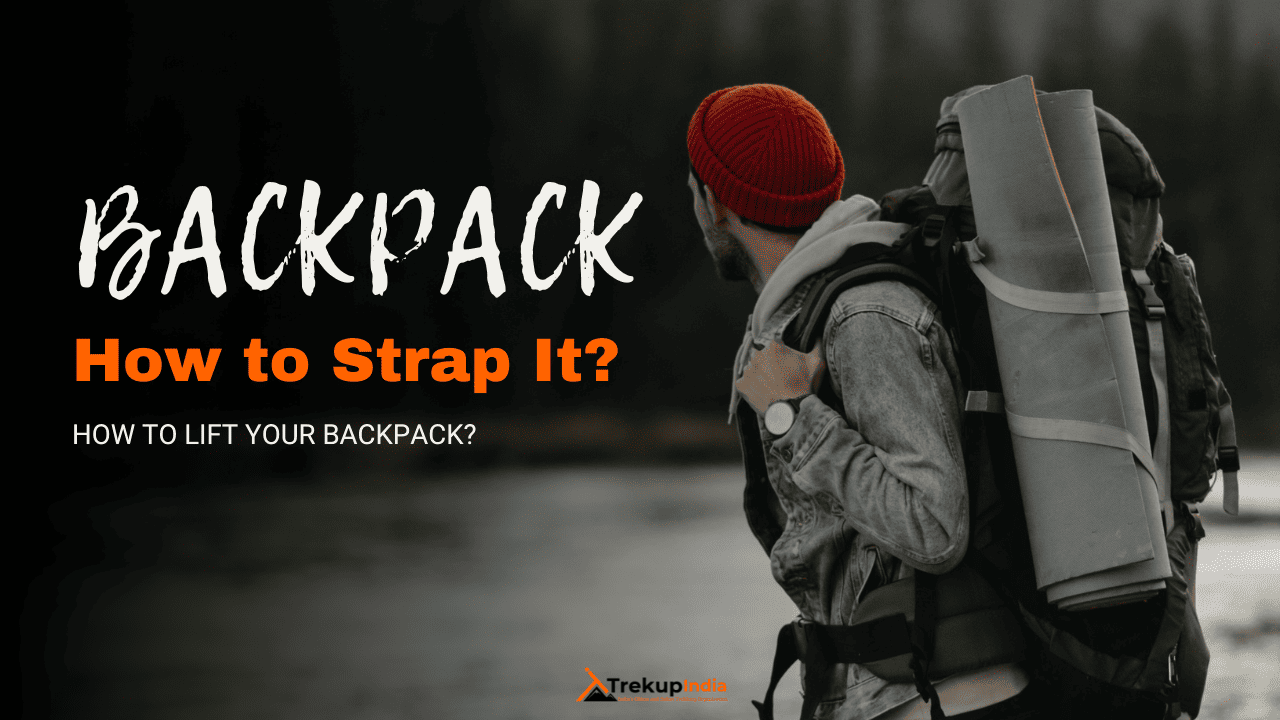
Know Everything About Acute Mountain Sickness
Acute Mountain Sickness occurs when people trek to high altitudes above 8,000 feet. This condition itself develops further due to reduced oxygen levels at such heights. Basically, as you go higher up, the air pressure and oxygen levels decrease, which causes the same problem. Acute Mountain Sickness surely causes headache, nausea, vomiting, and dizziness in affected persons. Moreover, peoples also experience difficulty in sleeping during this condition. To avoid mountain sickness, you should actually trek up slowly to higher altitudes. To learn further about this condition itself, watch the videos by Trekup India.
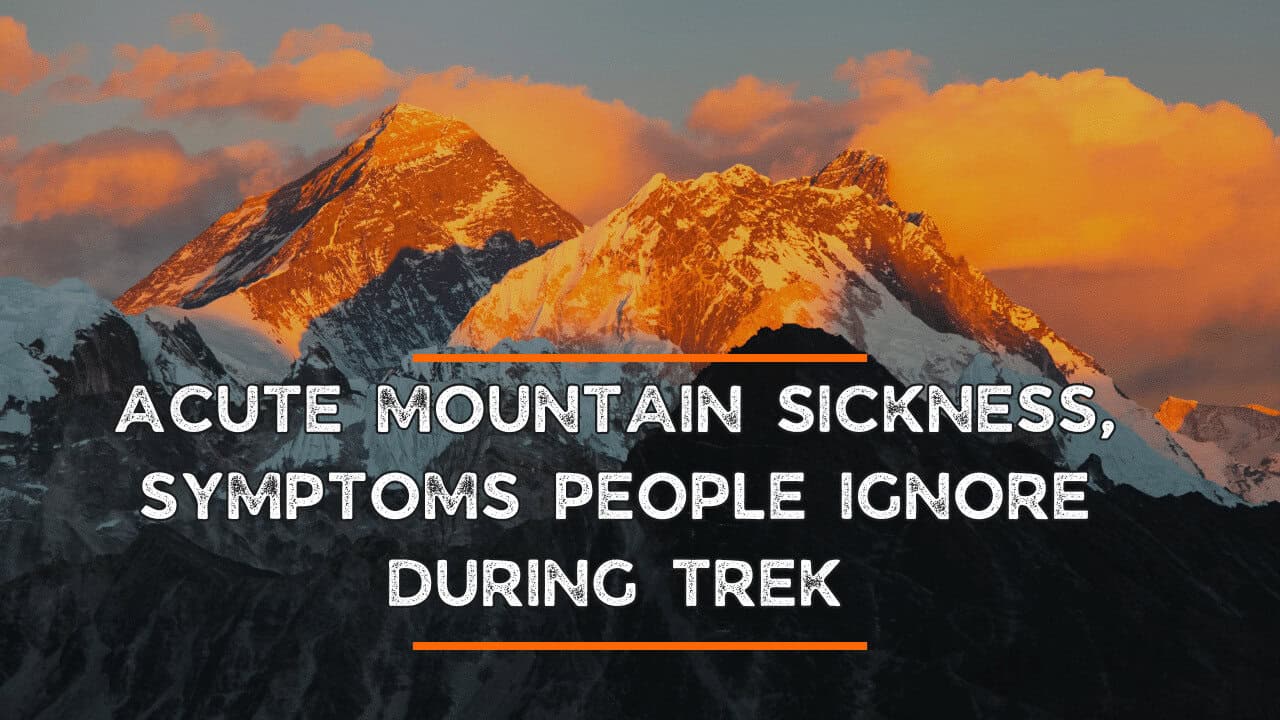
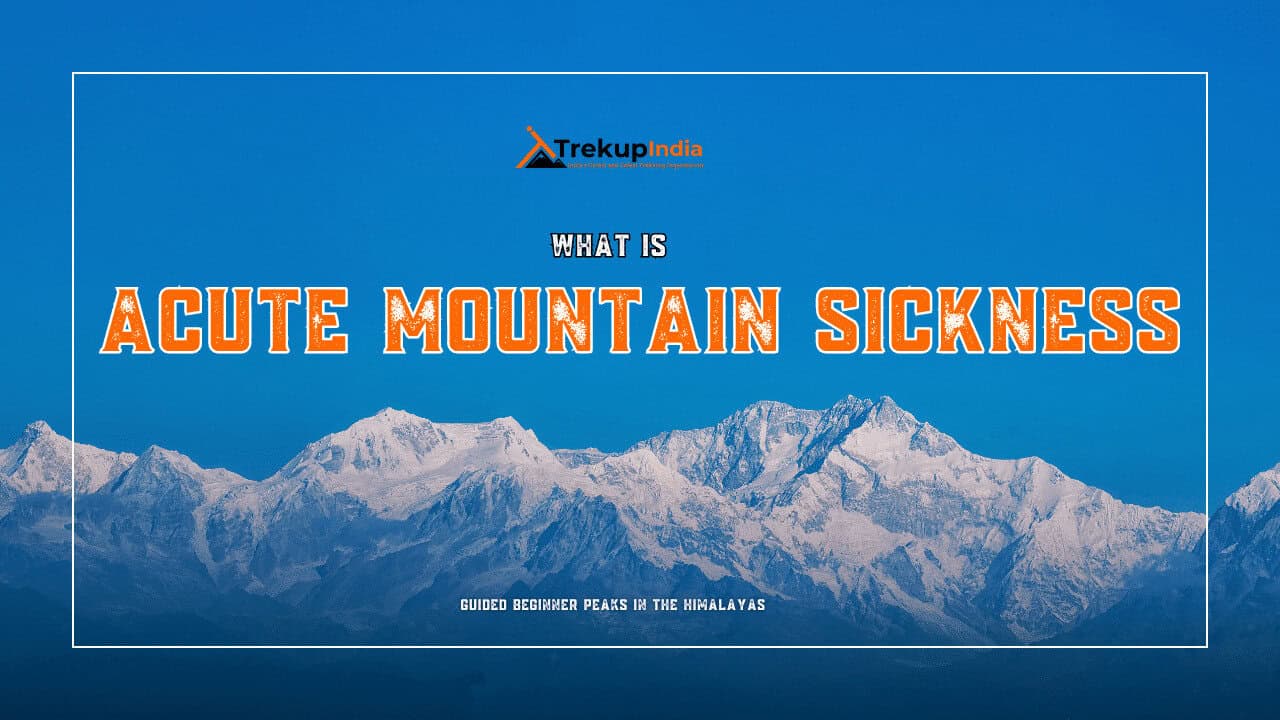
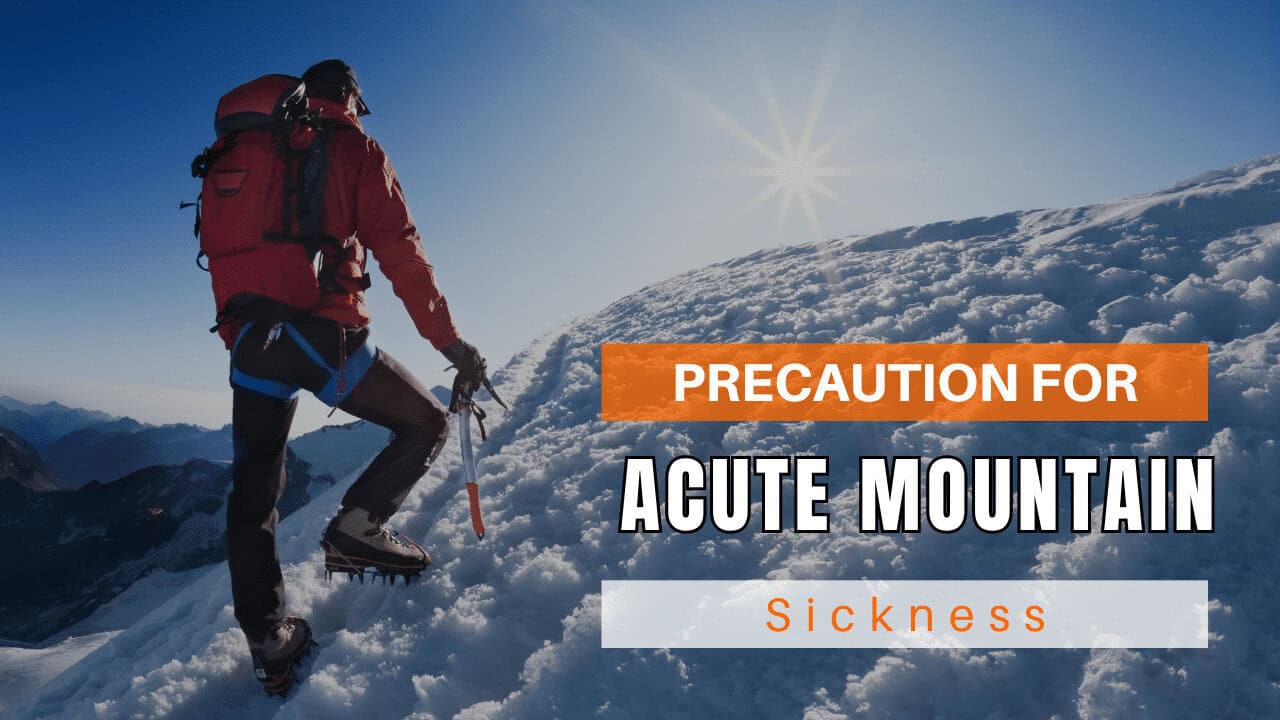
Day Wise Detailed Itinerary of Kanamo Peak Trek
Day 1: Reach Manali by 4 pm
- Reporting Time: By 4:00 PM
- Stay: Hotel in Manali (Dinner included)
It’s time to start your Kanamo Peak trek, which begins today as you reach Manali. Everyone is expected to arrive by 4:00 pm at designated hotel in Manali, where you will meet the Trekup India team and fellow trek participants.
After check in, our Trek Leader will lead a short briefing session which will include:
- Route and itinerary details for the trek
- Safety Procedures & Check ups by trek leaders and Awareness of AMS
- Checking the gear and assistance with renting (if necessary)
- Introduction to the trek’s leaders and staff.
This is also a great moment to connect with your trekking friends over a cup of refreshments and tea. The crisp mountain air, the distant snow capped Himalayan mountains, and the anticipation of a forth coming adventure all set the mood for the trek ahead.
The evening is a good time to walk around Old Manali and Mall Road.
We’ll end the day by having the pleasure of a rich meal at the hotel, and a relaxing night sleep will follow. Tomorrow, the real adventure starts as we move deeper into the Himalayas, towards Kaza, the base of Kanamo Peak.
Day 2: Manali to Kibber – 4,000 m / 13,500 ft
- Drive travel distance: 183 km
- Time taken: 6 to 8 hours
- Altitude Gain: 2,000 meters / 6,000 feet
In the morning, after breakfast, we begin the beautiful journey from Manali towards Kibber, the entrance into the Kanamo Peak trek. Our journey will take us via the Atal Tunnel into the awe-inspiring beauty of the Lahaul Spiti area.
The route is a journey through the Chenab River, with ever-changing landscapes ranging from lush valleys to the barren desert of Spiti. The route will pass isolated hamlets, barley and pea fields that are green gold shades, and stunning mountains that appear to have been created by the process of time.
The journey takes us through Batal, a rough stretch with bumpy roads that add to the adventure. From there, the true Spiti scenery unfolds pure, unspoiled, and straight from an old postcard. At the end of the evening, we will be at Kibber – One of the most beautiful and popular villages.
Your accommodation will be provided in a local homestay with a warm welcome and a true Spitian adventure. This day also marks the beginning of acclimatization, which is crucial for the high altitudes we will face on the Kanamo Peak trek.
Transport cost: Rs 2,000 (one-way) from Manali to Kibber, for both ways 4,000.
Day 3: Rest Day at Kibber
This day is devoted entirely to getting acclimatized, an essential stage for your body to get used to the conditions that are high in altitude, before we take off for higher campsites. Kibber, one of the most populated villages, provides the best setting to take a break from the journey.
In the morning, we’ll have the time to take a brief, short day hike through the village. There are small lanes dotted with traditional brick houses made of mud. You can also visit the well-known Chicham Bridge , the tallest suspension bridge in Asia, and enjoy breathtaking views of Spiti Valley. On the way, there is a chance to spot Himalayan blue sheep, or an elusive red fox further away.
The remainder of the time is free to take in the culture of the area , Chat with the locals, sip a cup of the butter tea, or take a break and observe the constantly changing play of light across the mountain ranges. It’s just as essential to take a break as the trek itself, allowing your body to adapt and helping you avoid altitude related problems.
The Trek Leader’s Tips: Keep yourself well-hydrated, eat light, nutritious meals, and stay away from overexertion. Even on rest days, moving slowly and inhaling fresh mountain air can aid in the process of acclimatization.
At night, we meet for an evening trek briefing, where the trek leaders & guide discuss the trek plans, conduct gear inspections, and provide safety instructions, as well as perform health check ups. Get up early because the next day we will venture deeper into the Spiti wilds.
Day 4: Kibber to Kanamo Base Camp – 4,815 m / 15,850 ft
- Trek Distance: 5.5 km
- Time Taken: 6 to 7 hours
- Altitude Gain: plus 2,350 feet / 720 meters
- Difficulty: Easy to Moderate (steep initial ascent, then level and gradual climb)
- Water Source: Carry at least 2 litres from Kibber, with the option to refill at a nearby lake, 1 hour before reaching Base Camp.
We depart from Kibber early in the morning and set out toward Kanamo Base Camp. A steep ascent greets the trail during the first 3 to 4 hours, traversing the rocky slopes, open meadows, and desert terrain at high altitude that is unique to Spiti.
After leaving the village, we pass through beautiful fields of peas. During harvest time, you might be able to get freshly harvested peas directly from the pod from friendly locals. As we ascend the landscape gets more stark but also more striking.
In the middle of the day, ascent slows down to the incline of a short, easy trek and allows you to breathe and enjoy the panoramic views of the nearby Himalayan ranges. The tranquil section does not last very long, since the final section is a gradual ascent which brings you close to Kanamo Base Camp.
As we trek, we pass through two alpine lakes. One of them serves as an essential source of water for Kaza village, providing the village with its drinking water. A little over an hour before Base Camp, you can refill your water bottles here.
The final two hours offer a stunning view and the slopes are covered by miniscule Brahma Kamal and vibrant wildflowers. There are also rocky areas that conceal deep secrets, including marine and plant fossils. Your trek guide will help you discover and identify these fascinating artifacts from the time that the region was under the Tethys Sea.
By the end of the afternoon, we arrive at Kanamo Base Camp, an imposing and rugged location surrounded by a soaring ridge. At this point, the massive silhouette of Kanamo seems a bit close, but the summit holds secrets for the massive push ahead.
The evening is spent relaxing in a hydrating and relaxing environment, as well as mentally prepping to make the summit challenge over the next few days. The cold here is more pronounced, so make sure you have warm clothes in your bag.
Day 5: Acclimatisation at Kanamo Base Camp – 4,815 m / 15,850 ft
Today is among the most crucial days of your trek and it is the day of complete acclimatisation and preparation at Kanamo Base Camp. With the top of Kanamo Peak soaring above 19,000 feet, the next day’s climb will require physical endurance and concentration. This rest day was designed so that your body has the best opportunity to adapt and recuperate before the major climb.
After a hot breakfast, the day is going to be relaxed but with a purpose. We’ll take the opportunity to take a short hike to an elevation that is slightly higher within the camp area to “climb high, sleep low,” which is a tried and tested method for better adaptation to altitude. This gives you a chance to take in the bleak and beautiful surroundings, as well as stunning perspectives from the Trans-Himalayan ranges.
In the afternoon, the Technical Team will hold a meeting to brief the summit participants and a skill session which will include:
- The route to the summit and anticipated difficulties
- The use of technical equipment when needed (ropes, gaiters, microspikes)
- Safety protocols and signals for communication
- Health check ups
- Pacing, hydration, and strategies for nutrition on the day of the summit
The remainder of the day is left to recuperation, hydration or mental preparation. At this high altitude, your body has to work harder, even when you’re not working. So avoid overphysical exertion. Drink plenty of hot or cold fluids frequently.
As the night draws closer and evening sets in, you will sense the anticipation increase as the cold winds intensify and the stars appear in the thousands as well as the silhouette of Kanamo sits quietly in the night sky in anticipation of. After having an early meal, it’s time to get back to your tents for sleep.
It’s time to go for the summit. The climb will start at night and will take only 3-4 hour to climb Kanamo Peak.
Note: Layer up before sleeping & take 2-3 litres of water for the summit.
Day 6: Kanamo Base Camp to Kanamo Peak Summit (5,975 m / 19,600 ft) & Return to Base Camp
- Distance: 11 km (round trek)
- Duration: 10 -14 hours (2:00 AM start)
- Altitude: Kanamo Peak Summit – 19,500 ft
- Difficulty: Challenging (Extreme scree slope section)
- Water: Carry 2 – 3 liters (no sources of water en route)
It’s the biggest day that begins in darkness. It’s 2 a.m., the first light of the day is a step out into the crisp, icy cold, with headlamps piercing the silence of the Spiti night. Our first objective is to make it to the first mountain shoulder that the mountain has before dawn, and the world is awakened in a dazzling array of pink, orange, and gold, showing off distant Himalayan mountains under a changing sky.
From here, the trail is pushed toward an the second shoulder and the temperature drops dramatically. The winds here are cold and constant – an appropriate balaclava and layering are crucial to protect your body from the cold.
The last section is the tough ascent, the relentless 4 hour ascent over steep scree slopes which can be tilted upwards at 80°. Every step could be accompanied by a half-step back, requiring a steady physical vigilance and mental concentration
The terrain finally is flattened into a peak ridge , and in just a few seconds you are on top of Kanamo Peak – 5,975 meters or 19,600 feet. The reward is amazing and breathtaking – the 360-degree panorama that spans the Himalayas that spans:
- Parang La Pass leading into Ladakh
- Pin Parvati Pass as it descends to the Kullu Valley. Kullu Valley
- The towering regions in Kinnaur, Lahaul, and Spiti
- The glistening glacier’s massive ice is hidden in the shadow of the summit
- Shila Peak , the twin of Kanamo, is constantly snow-clad, despite being at the same altitude
You’ll be able to see Kanamo has surprisingly little snow at its summit, an unusual characteristic of this mountain despite its altitude.
After taking in the view while taking photos and enjoying a delicious snack, we start the 2.5 to 3 hour trek towards Kanamo Base Camp. Ascending the scree is more efficient, but it is a matter of careful step-by-step footwork so as not to slip.
After returning to Base Camp, we rest in our tents, drink water, and tell the tales of the day that will be with you for the rest of your lives.
Pro Tip for the day: Summit success at this altitude is dependent on your pacing as well as steady breathing in addition to keeping the core of your body warm. Start slowly, keep your energy in reserve and let the Himalayan mountains inspire you..
Day 7: Kanamo Base Camp to Kibber | Drive to Manali
- Trek Distance: 5.5 km
- Trek Time: 2 to 3 hours
- Altitude Loss: 4,815 m / 15,850 ft to 4,115 m / 13,500 ft
- Drive Distance: 183 km
- Drive Time: 6 to 7 hours
- Expected Drop off Time: 7:00 PM at Beas Bridge, Manali
The todays small trek starts early this morning as we say goodbye to Kanamo Base Camp and descend to Kibber. 5.5 kilometers trek is mostly downhill and will take about 3 hours to retrace the picturesque route that we followed during our ascent. When you have the pounding of the summit to your back, make sure to really take in the stunning landscape, including the landscape of rolling meadows as well as the deserted Spitian slopes and fields of emerald green peas that surround Kibber.
At midday, we arrive in Kibber , where our vehicles are waiting. From there, we begin on the return journey to Manali returning to the stunning route across the Lahaul-Spiti valley and through the Atal Tunnel. The drive is approximately 7 hours and allows taking in the incredible views of mountains with high valleys, glacial streams and rocky valleys.
When we arrive in Manali After arriving in Manali, we’ll go towards our Trekup India partner hotel. Here, you can:
- Return any rental equipment
- Take items from the Cloakroom
- Refresh yourself before you embark on your next journey
At night, we’ll meet you off at Beas Bridge, Manali , which marks the official conclusion of the Kanamo Peak expedition. It’s where the team members exchange final hugs, pictures, and make promises to be together at the next Himalayan trail.
Note: Buffer one extra day in your travel plans to allow for delays caused by road or weather conditions in the mountains.
Kanamo Peak Trek Route Map
We’ve prepared a comprehensive Trek Route Map for your upcoming adventure to Kanamo Peak Trek, which outlines the entire journey including all stops and trails. This map provides detailed information on the terrain, distance between points of interest, and estimated travel time to help ensure a safe and enjoyable trek. We’ve carefully curated the map to ensure that you have all the necessary information at your fingertips. Please take a moment to review it thoroughly, and don’t hesitate to reach out if you have any questions or concerns.
Kanamo Peak Trek Altitude Chart
The Trek Altitude Chart is a useful tool for Trekkers to monitor their altitude changes during their rides, allowing them to plan their routes more efficiently and track their progress over time. This Kanamo Peak Trek chart is beneficial for both casual and experienced Trekkers, helping them make the most out of their Trek experience.
Trek Cost Inclusions
- Stay: 1 Night at Manali in hotel (twin/tripple sharing basis) on day 1, and 2 nights at Kibber (multi sharing basis) and 3 Nights of tented accommodation at individual campsites of Trekup India on twin sharing.
- Meals: Trekup India will provide freshly cooked meals during the trek starting with Dinner on Day 1 to tea, coffee on day 7 (Meals are simple, nutritious, and vegetarian)
- Transport Optional (extra) : For you have to pay 4,000 for both way from manali to Kibber & retunrn from Kibber
- Trek Insurance (Optional): Trekup India recommends that all trekkers consider getting trek insurance. This is optional, but highly recommended. Trek insurance covers unexpected events that may occur during your trek. The cost of the insurance starts from INR 210. Please read more about what is included in the coverage and why it is mandatory on treks. (you have to pay extra)
- Trek Equipment: Sleeping bag, Sleeping tents, Kitchen tent, Dining tent, Toilet Tent.
- Amenities: All utensils, sleeping mattresses (Black foam mats), Crampons, and Gaiters for snow.
- Health & Safety: First Aid Box, Oxygen Cylinders, Stretchers, Oxi meters, BP Machines, health.
- Permits: Forest Permits and Camping Permission Fee
- Trek Crew: High Altitude Chef, Helpers, Trek Leader & Guides, and other support teams.
- Potters & Mules: Potters and Mules are to carry all trekking equipment, ration, and vegetables.
Trek Cost Exclusions
- GST 5% (it is Mandatory)
- Any Meals/accommodation beside the itinerary or not mentioned in the program.
- Any Bus / Airfare to/from trek start/end point
- Personal Medical expenses do carry your medication.
- Any personal services such as Laundry, phone calls, liquors, mineral water, etc.
- Any still / video camera fee
- Any Entrance fee Monuments, Monasteries, Museums, Temples – Pay directly on the spot.
- Mules or porter charges to carry private baggage (Offload Charges for bag 365 per day, per bag if paid online (at base camp 2,550). Note: Bag weight should not be more than 10 kg.
- Any emergency evacuation charges
- Any services that are not mentioned in the cost inclusion section.
What should you pack for the Kanamo Peak Trek
Kanamo Peak Trek is a high-altitude trek. The trekking gear you have to have for this particular trek differs from normal treks. Thus, read this whole segment. There is an important question that the trekker who is doing trek asks, like what all things to carry while trekking. Below, we have provided the details on everything you should take; an easy way to remember is by Head to foot or foot to head. We have prepared from Head to foot.
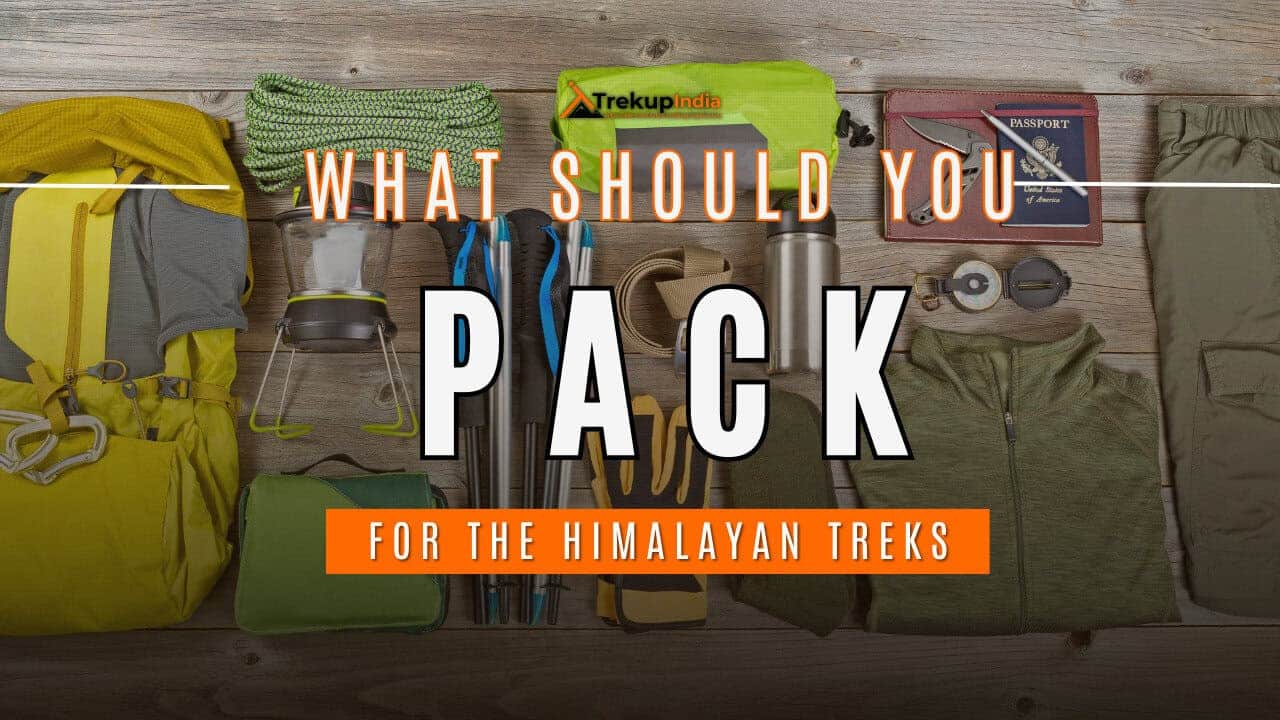
Head Gears
When trekking it's important to carry headgear to protect your head and face.
Heading out for a trek? Don’t forget to carry headgear to protect your beautiful face and head from the sun, wind, and dust! It’s an essential accessory that keeps you safe and comfortable throughout your adventurous journey. So, make sure you pack it before you step out into nature!
- Head Lamps – When trekking at night, headlamps are essential to illuminate your path while keeping your hands free. Headlamps come in different sizes and lumens, so it is essential to choose one that suits your needs.
- Hats or Cap – Caps or hats are also necessary when trekking in different weather conditions. Caps protect your head from the wind and freezing temperatures at night, while hats provide shade and protection from the sun during the day. It’s essential to ensure that your hat has a strap to prevent it from being blown away by the wind.
- Sunglasses – Sunglasses are also essential for trekking. Your sunglasses should protect your eyes from harmful UV rays and fit your face perfectly to avoid falling off while climbing, jumping, or crossing obstacles. The glass of your sunglasses should also be designed for different weather conditions to provide optimal visibility.
- Buff / Balaclava – Lastly, a buff or balaclava is a must-have to protect your mouth or neck from extreme temperatures and keep them warm. Buffs and balaclavas come in different materials, thicknesses, and designs, so it’s important to choose one that suits your needs and preferences. Depending on the weather conditions and your activities, you can wear them as neck warmers, face masks, or headbands.
Clothes
When trekking in high altitudes, prepare for cold weather by wearing layers. Layering traps heat, keeps you warm, and allows you to easily adjust your clothing as temperatures fluctuate.
Layering is important for different seasons when trekking. When planning a high-altitude trek, it is important to prepare for the cold weather. Wearing layers is the best approach as it provides both protection and flexibility when the weather changes frequently in the mountains. Layering helps to trap heat and keep your body warm, while at the same time allowing you to easily adjust your clothing as the temperature fluctuates. By wearing layers, you can enjoy your trek comfortably and stay safe in the unpredictable mountain weather
- For spring, summer, and monsoon treks, consider wearing three layers: a woollen sweater, a fleece, and a padded jacket.
- For autumn treks, add one more fleece layer to make it four layers.
- For winter treks, you may need five layers with thermals, a woollen sweater, two fleeces, and a padded jacket.
- T-shirt/sleeve shirt– Bring three T-shirts and two quick-dry trek pants, wearing one and carrying the others. Long sleeve shirts help to protect from sun UV rays. We recommend synthetic T-shirts as they get dry quickly when they get wet.
- Hiking / Trekking Jacket– down jackets (-5 to-10 C) or two-three-layer jackets.
- Thermals– at least two pairs of thermals help keep the body warm during cold weather.
- Undergarments– you can carry them according to your habitual and hygiene requirements.
- Gloves– 1 pair of gloves will keep your hand warm and nice.
- Trek Pants– Bring 2 to 3 comfortable trekking pants. Trekking pants play a significant role, as they are designed for comfort and mobility, making trekking easier. It should be Synthetic so that it gets dry quickly when wet.
- Rain Wear– you can carry a raincoat or Poncho. During long rains and snowfalls, the waterproof jackets start leaking. Still, the Poncho and raincoats keep you dry, so choose accordingly.
Tip: If you choose a raincoat on your trek, carry a small waterproof cover so things inside your backpack can’t get wet. If you carry a Poncho, you don’t need to worry. It protects both you and your backpack.
Foot Gears
When it comes to planning a trek, one of the most important aspects is to ensure that you have the right kind of foot gear.
- Trekking shoes which are waterproof and have ankle support. Walking / Hiking sandals which can be used off the trek, i.e., in the morning and evening hours when you reach the campsite, basically to get your feet rest from heavy boots, sometimes used for crossing streams and rivers, it’s more comfortable and safer than crossing barefoot or wetting your shoes. Sneakers (Optional) can be worn for normal driving days or used around the camp.
- Socks– you should at least carry 3 to 4 pairs.
- Microspikes & Gaitorswill be provided by Trekup India when required. You don’t have to carry them.
Personal First Aid Kit
Don't forget to pack your personal first aid kit! It's always better to be safe. So, make sure you're prepared for any unforeseen circumstances.
Below are some common medicines generally required/used during your adventure trip; however, please consult your doctors prior.
- Antiseptic towel or water syringe (to clean the wound)
- Butterfly bandage for a small cut
- Cotton and elastic bandages and sterile gauze pad for larger wounds
- Latex gloves are used when the wound bleeds.
- Medicine for Diarrhea (Upset stomach)
- Medicine for cold, flue/fever, headache
- Some pain killers
- ORS pouches
- Quick pain relief spray (External use)
- Any personal medicine prescribed by your doctor
- Dimox / Similar for high altitude sickness
- Bug Repellent
- Carry some nutria/energy bars and drinks (non-alcoholic)
- Note: Kindly consult your doctor before purchasing or taking any medicine.
Gadgets and Other Items
You might also consider bringing a camera, binoculars, portable charger, and snacks. Be well-prepared and tackle any trail with confidence.
- Trekking Poles
- Mobile phone
- Camera
- Spare batteries for phone and camera, power bank
- Lightweight flashlight or headlight
- A waterproof bag made of plastic is used for the camera.
- Plug/converter for electrical items
- 1-litre water bottle
- A journal with a pen would be a good idea to keep your notes.
- Some book of your interest for the ideal time
- Get into the habit of maintaining a Map and guidebook of the region.
Hygiene & Personal toiletry
Remember to pack hygiene and personal toiletry items such as soap, shampoo, toothbrush, toothpaste, deodorant, and toilet paper.
- Sunscreen with UV protection to shield your skin from harmful rays
- 1 or 2 small quick-drying towels to help you dry off quickly in case of rain or sweat
- Toilet paper, tissues or wet wipes for maintaining hygiene while on the trek
- Toothbrush, toothpaste, and mouth freshener to keep your mouth clean and fresh throughout the journey
- Deodorant or talcum powder to help you stay fresh and odor-free, especially during hot and humid climates
- Shampoo to keep your hair clean and healthy
- Sanitary pads or tampons (for female trekkers) to manage menstrual cycles
- Lip-gloss or salve to protect your lips from dryness and chapping
- Bio-degradable soap to keep yourself clean and hygienic while on the trek
- Nail clipper and other personal items that you use daily
Compulsory Documents to Carry
There are certain documents that you should always carry with you. These documents are not only necessary for your safety and security, but they may also be required by local authorities.
These files must be submitted to the Forest Department before your trek. With none of these, you will not be permitted to trek—original and photocopy of government photo identity card. Carry IDs like Aadhaar, voter ID, etc.
How To Plan Your Trek & Reach Manali?
Manali is a renowned hill station in Himachal Pradesh in India. There are many ways to get to Manali, dependent on your location of departure and method of transport.
By air: The nearest airport for Manali is Bhuntar Airport, just 50 kilometers away. Many domestic airlines offer regularly scheduled flights from Bhuntar to major Indian cities such as Delhi, Mumbai, and Chandigarh. In the arrivals hall, travelers can take taxis or autos to Manali.
By road: Manali is well-connected by roads to the major cities of North India. You can travel by taxi or bus to Delhi, Chandigarh, or Shimla to get to Manali. The journey to Manali is beautiful and offers stunning panoramic views over the Himalayas.
By train: The closest rail station for Manali is Jogindernagar, just 160 km away. The station needs to have more connectivity. Therefore, it is suggested that you take a train from Chandigarh or Kalka as they are the vital railway stations within the area. Once there, it is possible to get a bus or taxi to get to Manali.
Fitness Required & Preparation Guide For Kanamo Peak Trek
If you’re preparing for a Kanamo Peak Trek, Trekup India recommends jogging as part of your fitness routine. Jogging helps work out the same muscle groups that you’ll use during trekking and can help you build endurance. You don’t need any special equipment to get started.
Fitness Target
Trekup India has put the Kanamo Peak Trek into an difficult grade level trek.
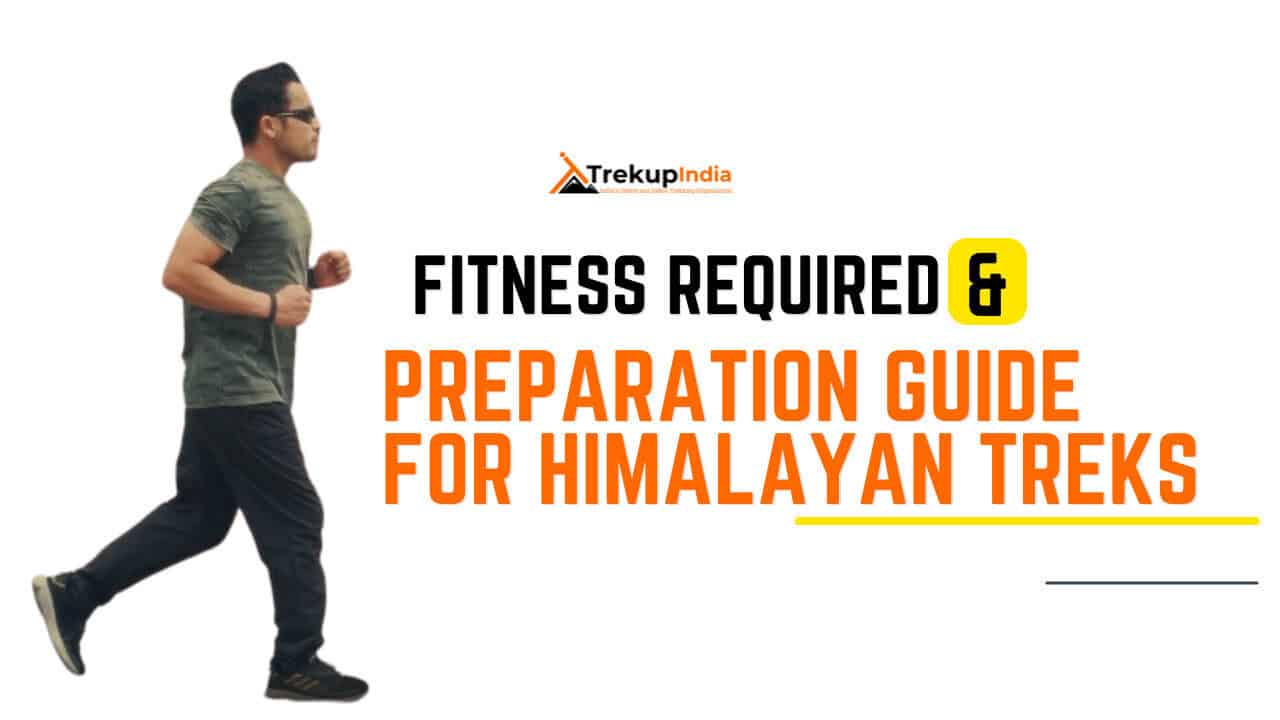
For Difficult – In order to be well-prepared for your upcoming trek, it is recommended that you focus on building your endurance by aiming to cover a distance of 5.5 kilometers in less than 45 minutes. This will help you to develop the necessary stamina and strength required to successfully complete your journey.
How to Achieve This Fitness Target?
To start preparing for your trek:
- Try jogging for at least five days every week.
- If you find 5 km too difficult at first, begin with 2 km and gradually increase over 2-3 weeks.
- Once you feel more comfortable running 5 km, focus on improving your speed gradually on a daily basis.
It is important to ensure that you can consistently complete 4.5 km in under 40 minutes for at least two weeks before your planned trek. Allow yourself 6-8 weeks to prepare physically for the journey.
Strength Training exercises that benefit Trekking
Trekking is an activity that demands a good level of strength.

Trekking is a demanding activity that requires good cardiovascular endurance, muscular strength, and overall fitness. To help you prepare for your trek, incorporating bodyweight exercises into your training routine can be an effective way to build strength, improve stability, and enhance endurance, all of which are crucial for a successful trek. In this regard, here’s a breakdown of body weight exercises categorized by the specific body parts they target and the benefits they offer during trekking.
1. Lower Body Exercises
Lower body exercises like squats and lunges are great for building lower body strength, essential for trekking.
a. Squats
Squats are an excellent exercise for building lower body strength, essential for trekking. They target the quadriceps, hamstrings, glutes, and calves. Solid quadriceps and glutes provide power for ascending and tackling uphill climbs, while vital hamstrings aid stability during descents. This is particularly helpful in navigating uneven terrain during trekking.
How to perform Squats Exercises:
- Stand with feet shoulder-width apart, toes pointing slightly outward.
- Lower your body by bending your knees and hips, keeping your back straight.
- Lower until your thighs are parallel to the ground or as low as comfortable.
- Push through your heels to return to the starting position.
b. Lunges
Lunges target the quadriceps, hamstrings, glutes, and calves. They improve lower body strength, balance, and stability, crucial for maintaining control on rocky trails and steep slopes. Additionally, they enhance flexibility, reducing the risk of injury while trekking.
How to Perform Lunge Exercises:
- Stand with feet hip-width apart, hands on hips or sides.
- Take a step forward with one foot, lowering your body until both knees are bent at 90-degree angles.
- Push through the heel of your front foot to return to the starting position.
- Repeat on the other side, alternating legs.
2. Upper Body Exercises
Upper body exercises such as push-ups and pull-ups effectively strengthen the upper body, especially the chest and shoulders, which are essential for carrying a backpack during treks.
a. Push-Ups
Targets: Chest, shoulders, triceps, and core.
Benefits for Trekking: Push-ups are an effective exercise to strengthen the upper body, especially the chest and shoulders, essential for carrying a backpack during treks. Improved upper body strength will also help maintain posture and stability while traversing challenging terrain.
How to Perform Push-Ups Exercises:
- Start in a plank position with hands shoulder-width apart and body in a straight line from head to heels.
- Lower your body by bending your elbows until your chest nearly touches the ground.
- Push through your palms to return to the starting position.
- Keep your core engaged throughout the movement.
b. Pull-Ups/Bodyweight Rows:
Targeting the back, biceps, and shoulders can significantly benefit trekking. You can strengthen these muscle groups by performing pull-ups or bodyweight rows and improve your posture and balance while carrying a backpack. Additionally, more muscular back muscles can help reduce the risk of back strain and fatigue during long treks, making your journey safer and more comfortable.
3. Core Exercises
Core exercises like planks and Russian twists can help strengthen the core muscles, which are crucial for maintaining stability and balance while trekking on uneven terrain.
a. Planks
Targets: Abdominals, obliques, and lower back.
Benefits for Trekking: Planks are an effective exercise that helps strengthen the core muscles. These muscles are crucial for maintaining stability and balance while trekking on uneven terrain. A strong core also helps improve posture, reducing the risk of back pain and fatigue during extended hikes.
How to Perform Planks Exercises:
- Start in a plank position with elbows directly under shoulders and body in a straight line from head to heels.
- Engage your core and hold the position, avoiding sagging or arching the back.
- Keep breathing steadily and hold for the desired duration.
b. Russian Twists
Targets: Obliques, abdominals, and lower back.
Benefits for Trekking: Russian twists engage the core muscles, particularly the obliques, improving rotational stability and balance. Enhanced core strength helps prevent injuries and improves overall performance during trekking.
How to Perform Russian Twist Exercises:
- Sit on the ground with knees bent and feet flat, leaning back slightly to engage the core.
- Clasp hands together and twist the torso to one side, bringing the hands towards the ground beside the hip.
- Return to the centre, then twist to the other side.
- Continue alternating sides for the desired number of repetitions.
4. Full Body/Cardiovascular Exercises
Full-body/cardiovascular exercises like burpees and mountain climbers are excellent for improving cardiovascular endurance, strength, and agility.
a.Burpees
Burpees are an excellent full-body exercise that targets your legs, chest, arms, and core. This exercise dramatically benefits trekking enthusiasts, improving cardiovascular endurance, strength, and agility. Regularly incorporating burpees into your workout routine can enhance your overall fitness level, which can help you endure long hikes and rugged terrains with ease.
How to Perform Burpees Exercises:
- Start in a standing position.
- Squat down and place hands on the ground.
- Jump feet back into a plank position.
- Perform a push-up.
- Jump feet back to the squat position.
- Explosively jump up into the air, reaching overhead.
- Land softly and repeat the sequence.
b. Mountain Climbers
Mountain climbers target the core, shoulders, chest, and legs. This dynamic, full-body exercise can significantly improve cardiovascular endurance and agility. It is an excellent functional workout for trekking preparation as it engages both the upper and lower body muscles while strengthening the core muscles.
How to Perform Mountain Climbers Exercises:
- Start in a plank position with hands shoulder-width apart and body in a straight line from head to heels.
- Drive one knee towards the chest, then quickly switch legs, alternating in a running motion.
- Keep the core engaged and the hips stable throughout the movement.
- Continue at a moderate to fast pace for the desired duration.
Incorporating bodyweight exercises into your training routine can help you build strength and endurance and prepare your body for the physical demands of trekking. Consistency and proper form are crucial to maximizing the benefits of these exercises and ensuring a safe and enjoyable trekking experience. Engaging your core muscles, including obliques, abdominals, and lower back, with Russian twists can improve your rotational stability and balance, preventing injuries and enhancing overall performance during trekking.
When incorporating strength training exercises into your workout routine, it’s essential to maintain proper form and technique to avoid injury. Start with lighter weights and gradually increase the intensity as you progress, focusing on compound exercises targeting multiple muscle groups simultaneously. Some examples of practical strength training exercises for trekking include squats, lunges, deadlifts, and pull-ups.
Remember to give your muscles time to recover between workouts, and remember to stretch before and after your workouts to prevent injury and improve flexibility. Combining strength training with jogging and proper stretching allows you to take your fitness to the next level and confidently tackle even the most challenging treks.
Our Trekkers Reviews And Expreinces
Food Provided by Us During Trek
We provide only Indian vegetarian food, and your meal will mainly consist of Indian bread, vegetables, lentils, rice, and a delicious dessert. During your trek, we will serve three meals a day, including breakfast, lunch, and dinner. You will also be served tea, snacks, and lip-smacking soup in the evening before dinner. If it is a long day of trekking, you will be given a packed snack.
After extensive research on the trekkers’ nutritional requirements, we prepare the menu. Before putting all the meals together, we also consider the altitude and the weather.
The meal we serve during the trek is perfectly balanced with calories, carbohydrates, vitamins, protein, fibre, and minerals. You need to know that all our cooks have great expertise in cooking and have undergone thorough training. So, get ready to enjoy delectable and lip-smacking dishes during your trek. You will be served with lemon tea in the tent to start your day with a refreshed feeling. Before leaving the campsite for trekking, you will be given a hot finger-licking breakfast like upma, Aallu Prantha, Besan Chilla, Poha, Daliya, Corn flakes, and Maggie, along with tea or coffee.
If your trek is longer, we also offer some fresh local fruits such as apples and healthy drinks like Frootie or Maaza. In the afternoon, you will be served a simple & healthy lunch, while at around 04:00 pm, you will be given tea and a light evening breakfast. After you reach your campsite at night, you will be served a hot and delightful dinner.
After reading this, you must have understood the food we provided on the trek; you don’t need to worry about food. Many trekkers repeatedly trek with us because of the food we provide. Thus, we will give you unforgettable experiences.
Safety During Kanamo Peak Trek
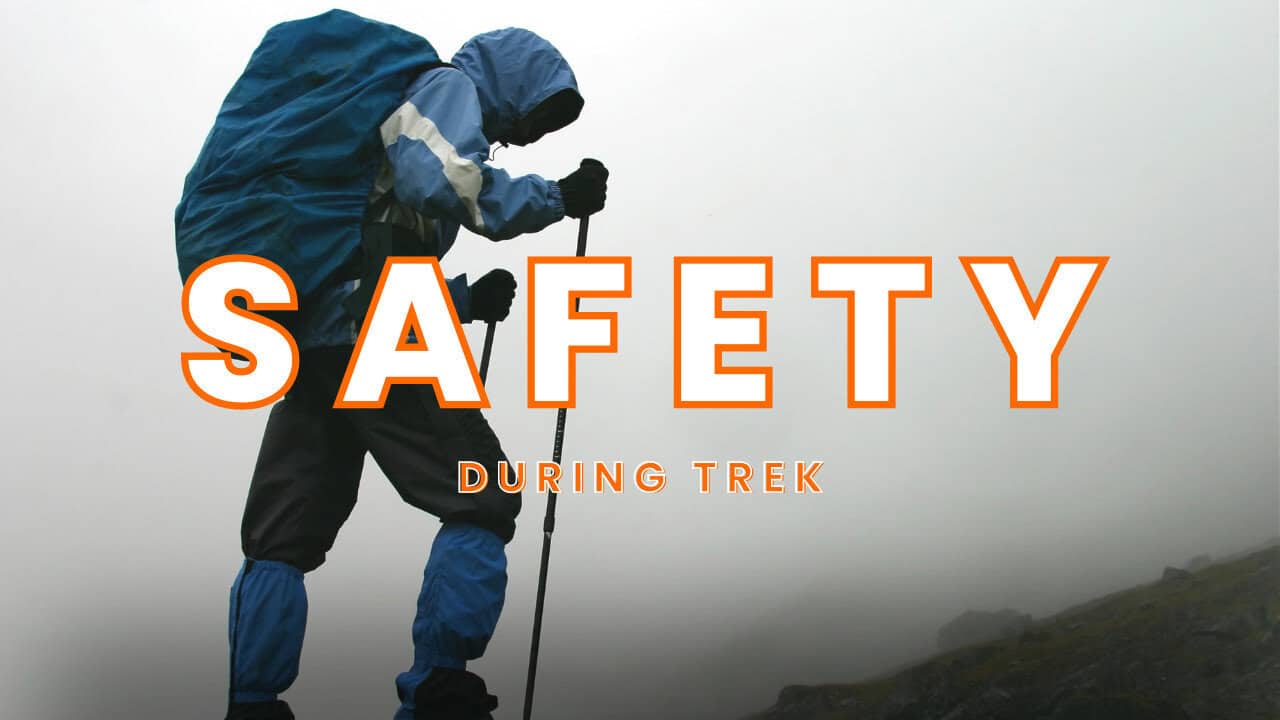
Trekking with us for the Kanamo Peak Trek is entirely safe because we have a team of trek leaders qualified in Wilderness first-aid and complete information about the high-altitude glitches. During the trek, we carry a full first-aid kit that contains all the essential medicines. Before trekking with us, you must ensure that you are medically fit for the trek; for us, your medical fitness is more important than anything else.
Right from our establishment, we at Trekup India have been continuously introducing new safety practices into Indian trekking to ensure the safety of voyagers. Trekup India introduced microspikes and made emergency bottled oxygen mandatory for all treks. Our trek leaders take your daily Pulse oximeter reading. We at Trekup India introduced the radio walkie-talkie as a safety communication device.
How can we ensure that your trek is safe with us?
We have noticed that most trek-organizing organizations do not follow these systems, but with time, they are following us; several competing companies are adopting these practices and organizing great, safe treks.
We ensure complete technical safety in the mountain. Our company has a vast team of more than 100 guides and trek leaders who serve on Himalayan treks. One of the best things about our team is that all the members are trained professionally by the Nehru Institute of Mountaineering, Indian Mountaineering Foundation Delhi, and Hanifle Center Outdoor Education Mussoorie.
Explore our New Safety Protocols
To ensure a perfect Trek, we have introduced some new safety checks to ensure excellent safety for our trekkers.
Our On-trek safety checks include:
- Daily oxygen saturation, along with pulse readings
- Stretchers team appointed on every trek
- Radios
- Trained mountain staff and complete safety
- Additional oxygen cylinders
- Special medical kit for high-altitude treks
- Microspikes on all types of snow treks
- Experienced Trek leaders, as well as safety
- Technical team on all snowy slopes
For Us, Your Safety Is the Top Priority
At Trekup India, you will find a team with local knowledge and fluency in English and Hindi. This helps ensure that you have a fantastic trek. Not only this, but we also pay attention to your health and safety because this is something we cannot ignore. All the team leaders involved in trekking have already undergone several professional courses in first aid, portable altitude chamber training, CPR, environmental awareness training, and advanced wilderness emergency medicine.
We also carry a complete first aid medical kit on every trek and trip we organize. Apart from the medical kit, we take a portable altitude chamber (if needed) and medical oxygen for all high-altitude treks. Our company has significant expertise in organizing all sorts of group adventure holidays for family groups, school and college groups, and friend groups. We have many travel options that suit different fitness levels and travelling styles.
Regardless of the group size, we value each and every member of our trekking groups. Our commitment to personal attention ensures that your needs and safety are always our top priority.
Who we are?
Trekup India has been a stalwart in the Adventure Tourism industry for 30 years. Since our inception, we have been dedicated to providing top-notch treks, voyages, trekking programs, and high-altitude expeditions. Our extensive experience is a testament to our commitment to your adventure and safety.
We organize treks in Uttarakhand, Kashmir, Sikkim, and Himachal while being part of the trekking community; we feature more than 75 documented Himalayan treks. In addition to other outdoor activities, our company also organizes trips for schools, colleges, and families.
Therefore, we maintain the quality of services offered to our valuable customers.
Must Read These Information Of Kanamo Peak Trek
Why You Should Do Kanamo Peak Trek
The trek is challenging and meant for experienced people because it helps you check your endurance. Even with that, it offers breathtaking views of the peaks and new cultures and traditions. Some of which we have shown below will help you understand why.
1. The deserted mountains have charm and picture-perfect scenic views, with some areas with spread-out vegetation.
The deserted mountains have charm and picture-perfect scenic views, with some areas with spread-out vegetation.
2. During the harvest season, you can catch the locals in their fields with locally grown vegetation in Spiti Valley.
As you trek to Kanamo Peak, you will come to an area where the locals during the harvest season are harvesting fields where you can see and taste peas and other locally grown vegetables.
3. While driving on the Manali- Leh Highway, you would cross mountain-carved roads.
If you are a thrill junky, driving through a mountain-carved road is for you.
4. Traditional Spiti and nearby Valley Houses and villages are one of the sights which are only found here.
You might have seen many images with white stone walls and red-roofed with multiple windows built on the cliff. This is the view of Spiti and other valleys in the region.
5. You could also see Brahma Kamal and various other flowers spread across the slope.
Another sight that makes Kanamo Peak Trek a must-go trek you could see up close the fields of Brahma Kamal and other locally found flowers.
Best time to do Kanamo Peak Trek
Kanamo Peak Trek is best done during two seasons: Monsoon, which takes place between July and August, and Autumn, which takes place between September and mid-November. In August, you might be lucky enough to enjoy the harvest season in Spiti Valley. Between September and November, you will be walking through the trek covered in snow, boulders, moraine, and scree. This trek makes it difficult, but with the help of a guide, Trekup India, and snow trekking equipment, you can walk through the trail.
How Difficult is the Kanamo Peak Trek
Kanamo Peak is considered a challenging trek due to its high altitude, exceeding 14,000 ft. The trek ascends rapidly, and your safety heavily relies on the level of preparation you undertake. Having prior experience with trekking in the Himalayas before embarking on this journey can help you adapt to the rigours of the trek. Additionally, knowledge of Acute Mountain Sickness is beneficial in managing any altitude-related challenges encountered along the way.


